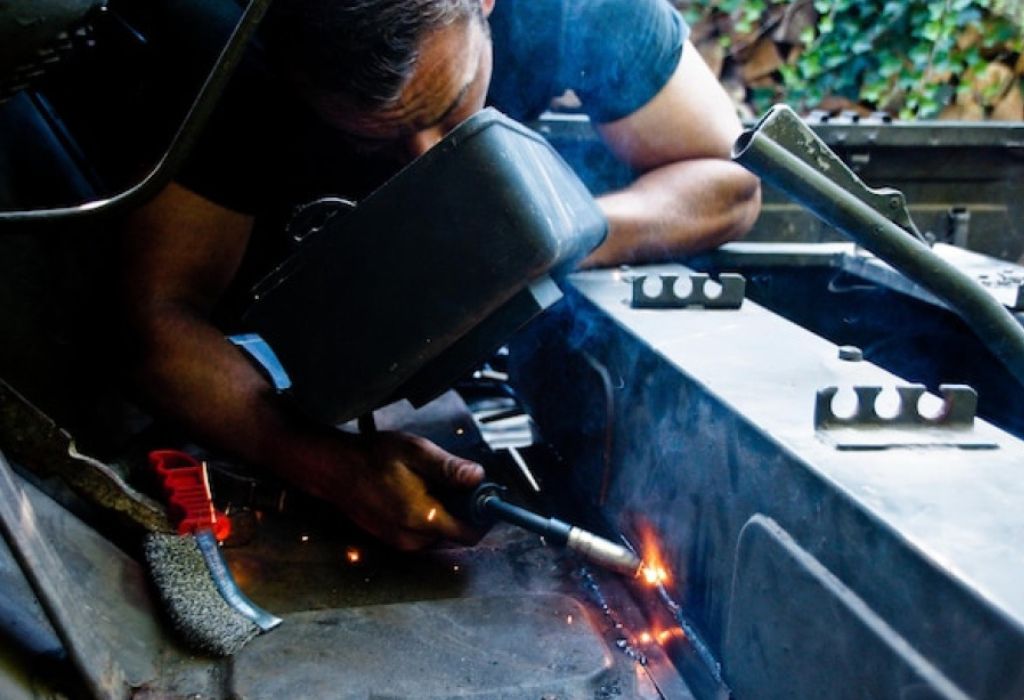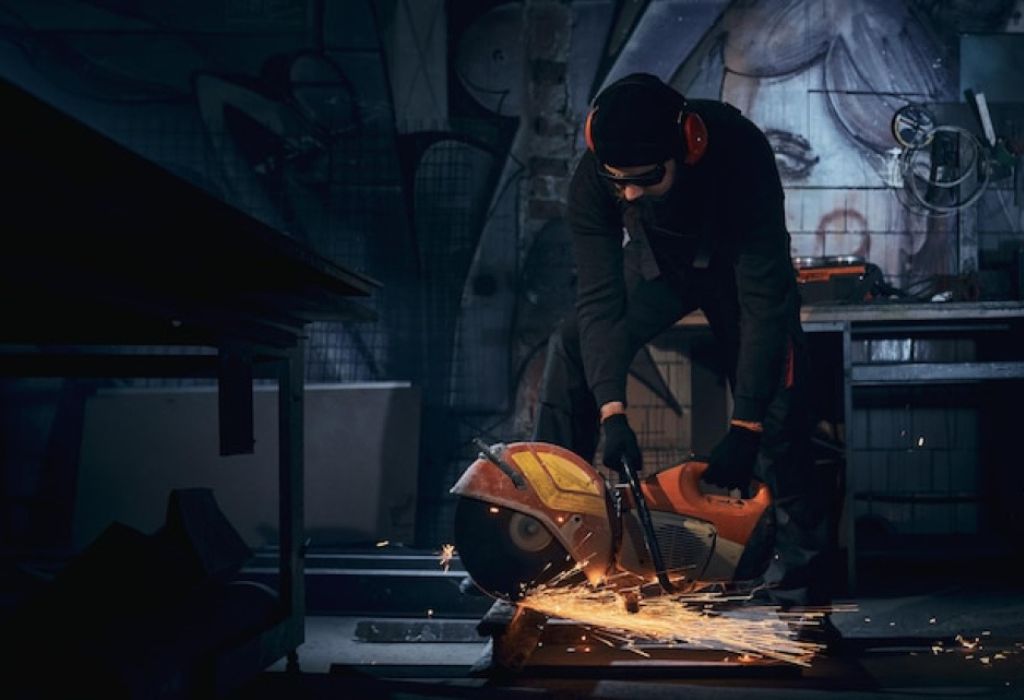A maintenance welder steps into a soggy workshop, boots splashing water and gloves damp from sweat. He reaches for the electrode, paused, and for a moment wonders: can a welding machine shock you?
That thought isn’t idle — even a mild current through your body can startle you or make you lose footing. According to safety guides, even the no-load (open circuit) voltage of a welding machine can pose danger when conditions are unfavorable. ccohs.ca+1
In this article you’ll learn exactly how a welding machine can shock you, the difference between primary and secondary shocks, risk factors, preventive controls, and first aid. This knowledge can save careers — even lives.
Yes — a Welding Machine Can Shock You

A welding machine can deliver electric shock under certain conditions. When your body becomes part of the circuit — touching both electrode and work, or a faulty component — current flows through you.
There are two main shock sources:
- Secondary voltage (welding output circuit)
- Primary or input voltage inside the machine
What is secondary voltage shock?
It occurs when touching the electrode or work while your body completes the welding output circuit.
What is primary voltage shock?
It happens if you touch energized internal parts of the welder power supply while grounded.
Is it always dangerous?
Not always — severity depends on voltage, current path, exposure time, and body resistance.
How Electric Shock Occurs in Welding
Electricity flows along the path of least resistance. When skin is wet, sweaty, or broken, resistance drops, making shock more likely.
When the electrode circuit is open (no arc), the voltage at the electrode terminal — called open-circuit voltage (OCV) — is highest. Touching the electrode at that moment is more dangerous. PrimeWeld+3lincolnelectric.com+3mromagazine.com+3
If your body bridges the electrode and work (or ground), current can pass. Grounding, insulation, and proper connections are crucial to avoid that.
Why is OCV a danger point?
Because voltage is maximum when no arc is struck.
Does a good ground clamp help?
Yes — it helps ensure the welding current remains in the proper loop.
Does wet skin or gloves worsen it?
Yes — moisture dramatically lowers resistance.
Is the shock instantaneous?
Yes — even a brief current can disrupt heart rhythm or cause muscle contraction.
Factors That Increase Shock Risk
Several conditions make a shock more likely:
- Moisture or wet surfaces, especially damp floors or sweaty gloves
- Poor insulation or damaged cables/hoses
- Rusty, painted, or dirty clamp contacts
- Long welding leads, which allow stray paths and voltage drop
- Working in tight, confined metallic surroundings
- Welding processes where electrode is “hot” at idle, such as stick arc welding
Does humidity matter?
Absolutely — more moisture reduces insulation.
Do worn or cracked cables add risk?
Yes — they expose conductors.
Does the clamp contact surface matter?
Yes — poor contact increases stray current.
Do long leads make it worse?
Yes — they create more opportunity for leakage or stray paths.
Types of Shock and Related Hazards
Secondary (Output) Shock
This is the most common shock type in welding. The electrode or holder is part of the circuit, and if your body bridges any part, you can receive current.
Primary (Input) Shock
Less frequent but more dangerous. Occurs if internal insulation fails, or if you open the machine case and touch energized parts.
Other Hazards
- Arc flash and burns: sudden bright light and heat when electrical arcs occur
- Contact burns from hot workpiece or electrode
- Falls or injuries from sudden jolts or muscle contractions
Which shock is more common?
Secondary shock from electrode and work bridging is most frequent.
Is primary shock more dangerous?
Yes — it often involves line voltage and can be fatal.
Does arc flash count as shock?
Not exactly — it’s a thermal/electromagnetic event, not current through the body.
Can burns accompany shocks?
Yes — electrical burns or heat from arcs can damage skin and tissue.
Welding Processes & Their Shock Risk

Stick / SMAW
Stick electrodes are live when the machine is energized. Touching the tip or changing rods can cause shock.
TIG (Lift / Scratch Start)
Before arc initiation, tungsten may be energized. That moment can pose shock risk.
MIG / Flux-Cored
These systems often keep the torch “cold” until the trigger is pressed — lowering idle voltage exposure. However, faults, miswiring, or leakage can still cause shocks.
Remote or inverter setups
These also carry risk; even modern inverter welders can leak current if insulation is compromised.
Which process is riskiest?
Stick/MMA often because electrode is active even when no arc is present.
Is MIG safer by default?
Often yes, due to trigger control, but not guaranteed.
Do inverter welders eliminate shock risk?
No — they can still leak or fail insulation.
Engineering Controls, Procedures & PPE to Mitigate Shock
A zero-tolerance plan is best. Use these layers:
- Engineering controls: Voltage Reduction Devices (VRD) to lower open-circuit voltage, isolated circuits, insulation, protective earth bonding
- Administrative controls: training, lockout/tagout, safe work permits, job planning
- Personal protective equipment (PPE): dry insulating gloves, leather jacket, rubber mats, boots
Also ensure the return clamp is placed close to weld point to minimize stray currents. mromagazine.com+2emcinsurance.com+2
Is VRD effective?
Yes — it reduces voltage during idle periods to lower shock severity.
Do safe leads matter?
Yes — good insulation and secure routing reduce leakage.
Are rubber mats and insulation helpful?
Yes — they break accidental contact paths.
Does training help?
Absolutely — knowing how to avoid risky contact is crucial.
Pre-Welding Setup Checklist
Before striking the arc, always:
- Inspect cables, leads, electrode holder for damage
- Ensure ground clamp is on clean metal
- Dry gloves, clothing and workspace
- Check insulation on machine and cables
- Confirm VRD or low idle voltage if available
- Remove water, moisture, or conductive debris
- Establish safe standing (insulated mats, dry surface)
Where should the clamp go?
On clean bare metal near the weld zone.
How often inspect cables?
Before every job or shift.
Should you test output voltage?
Yes if policy demands — measure open circuit to verify safe levels.
What about stray metal pieces?
Remove them — they can create unintended paths.
Common Shock Scenarios & Field Incidents
- A welder changes electrodes mid-job in a damp environment and feels a tingle
- MIG torch shroud becomes live due to short in nozzle or insulation failure mig-welding.co.uk
- Standing in puddles while holding electrode holder
- Welding on large metallic structures causing stray current through building earth
Can small shocks be harmful?
Yes — even small jolts can disrupt balance or heart rhythm.
Are shocks always fatal?
No — severity depends on path, voltage, and exposure.
Do professionals get shocked?
Yes — many report minor shocks from moisture or wear.
Are forums reporting this?
Yes — e.g., MIG torch shocks reported by users due to insulation faults. mig-welding.co.uk
What to Do If Shock Occurs — First Aid & Response
- Immediately remove the source (power off)
- Do not touch the victim with bare hands
- Use nonconductive object to separate contact if needed
- Call medical help quickly
- If trained, begin CPR if victim shows no signs of life
- Document incident and inspect equipment before restarting
Who calls for help?
The assigned safety or job lead.
Should victim be moved?
Only if absolutely unsafe to stay.
Is skin inspection needed?
Yes — check for burns or entry wounds.
Does incident require root cause review?
Yes — review leads, insulation, procedures, and training.
Standards, Codes & Safety Guidelines

Relevant standards include IEC/EN 60974-1 for welding equipment, local electrical safety codes, and site regulations. Safety bodies warn that open-circuit voltage and equipment insulation must be maintained to prevent shock. YouTube+3mromagazine.com+3lincolnelectric.com+3
Site audits often check insulation, grounding, and training. Some building safety codes require GFCI or isolation for tool circuits used in metal workzones.
Are there global rules?
Yes — but they vary. Always follow local law plus manufacturer’s specs.
Do welders need certification?
Often yes — safety training is mandatory in many job specs.
Do inspection logs matter?
Yes — documented maintenance and tests help prove compliance.
Future Trends That Reduce Shock Risk
- Smarter inverters with faster shutdown and leakage detection
- Built-in current sensors to detect stray paths
- Remote monitoring to flag insulation degradation
- Integrated VRD / low idle logic in more machines
- Wearable sensors that warn welders near dangerous contact zones
Will robots eliminate the problem?
Robots reduce human exposure but not all tasks are automated yet.
Can AI foresee equipment faults?
Yes — predictive diagnostics can alert before failure.
Will VRD become mandatory?
In many high-risk industries, yes — adoption is already increasing.
Conclusion
In short: Can a welding machine shock you? Yes — under certain conditions, electric shock is a real hazard. Whether through the electrode circuit (secondary) or internal fault (primary), current can pass through the body depending on contact, moisture, and insulation.
Preventing it requires layered safety: good engineering design (VRD, insulation), clean setup and equipment, strict procedures, and protective gear. If you ever feel a tingle, stop immediately, de-energize, inspect, and repair before continuing.
Stay alert. Prioritize safety. Let your welding machine serve you — not threaten you.

I’m Darrell Julian, the founder, lead writer, and hands-on welding enthusiast behind ArcWeldingPro.com. With more than 15 years of real-world welding experience, I created this platform to share what I’ve learned in the field, in the shop, and in the heat of the arc.


